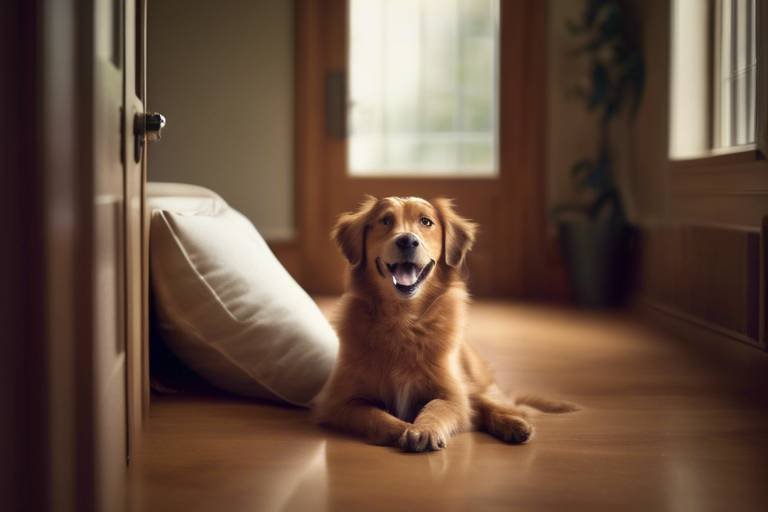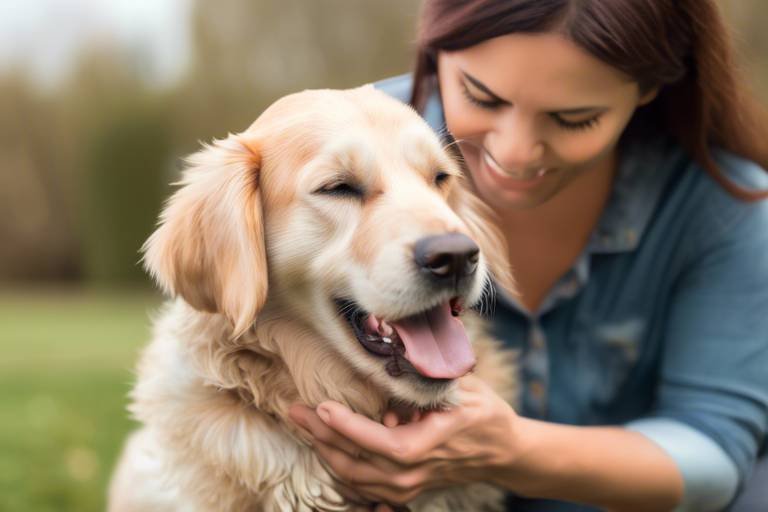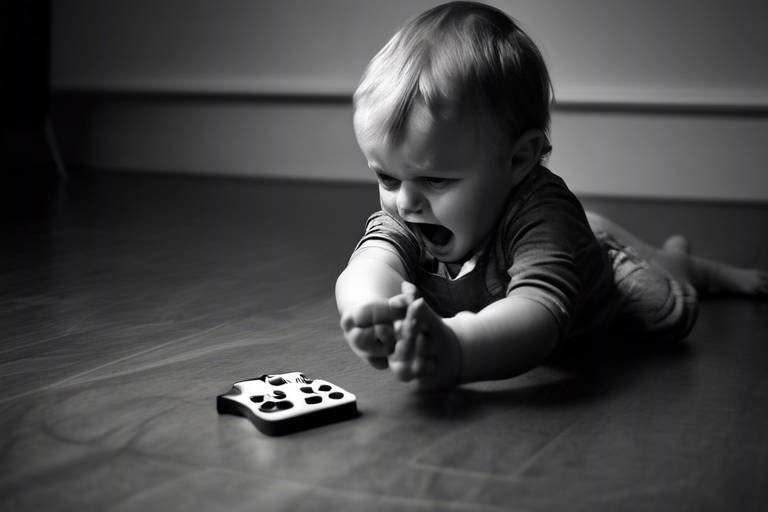Tips for Preventing Problem Behaviors in Pets
Owning a pet can be one of the most rewarding experiences in life, but it can also come with its fair share of challenges. One of the biggest hurdles many pet owners face is dealing with problem behaviors that can disrupt the harmony in their homes. Whether it’s a dog that won’t stop barking or a cat that insists on clawing the furniture, understanding and addressing these behaviors is crucial for fostering a peaceful coexistence. In this article, we’ll explore effective strategies to prevent common problem behaviors in pets, ensuring a harmonious relationship between you and your furry friend. So, let’s dive in and discover practical tips and insights that can lead to a well-behaved companion!
Before we can tackle problem behaviors, it's essential to understand what they are and why they occur. Pets, much like humans, can exhibit a variety of behaviors that may be considered problematic. Some of the most common issues include:
- Barking: Dogs may bark excessively due to boredom, anxiety, or the need to alert their owners.
- Chewing: This behavior often stems from anxiety, teething, or simply a lack of mental stimulation.
- Aggression: Aggressive behaviors can be triggered by fear, territorial instincts, or improper socialization.
Recognizing the root causes of these behaviors is crucial. For instance, a dog that barks at every passerby might be acting out of fear or a need to protect its territory. By understanding the underlying motivations, you can take effective steps to address these issues.
One of the most effective ways to prevent problem behaviors in pets is to establish a consistent daily routine. Pets thrive on predictability, and a well-structured schedule can significantly reduce anxiety and behavioral issues. By incorporating regular feeding, exercise, and playtime into your pet's day, you create a sense of stability that can lead to a happier, more well-adjusted animal.
Regular feeding times can help regulate your pet's behavior and promote discipline. When pets know when to expect their meals, they are less likely to exhibit food-related issues such as begging or scavenging. Try to feed your pet at the same times each day, and consider using a feeding schedule that aligns with their natural instincts. For example, many dogs do well with two meals a day, while cats may prefer smaller, more frequent feedings.
Adequate physical activity is vital for a pet's mental and physical health. Regular exercise and play can prevent destructive behaviors and keep pets engaged. Dogs, in particular, need daily walks and play sessions to burn off energy. Cats, on the other hand, benefit from interactive toys and climbing structures that stimulate their natural hunting instincts.
Remember, a tired pet is a well-behaved pet! Incorporate a variety of activities into your pet's routine, such as:
- Daily walks or runs for dogs.
- Interactive toys that challenge your pet mentally.
- Playdates with other pets to encourage socialization.
Using positive reinforcement is an effective way to encourage good behavior in pets. This method focuses on rewarding desirable actions rather than punishing undesirable ones. By reinforcing positive behaviors, you not only help your pet learn what is expected of them but also strengthen the bond between you.
Clicker training is a popular method for reinforcing positive behavior. It involves using a small device that makes a clicking sound to mark the desired behavior, followed by a reward. This technique helps pets associate the click sound with positive outcomes, making it easier for them to understand what you want from them. Start by clicking and rewarding your pet for simple commands, gradually increasing the complexity as they learn.
Implementing a reward system can motivate pets to behave well. Rewards can come in various forms, including treats, praise, or playtime. The key is to be consistent and timely with your rewards, ensuring that your pet understands which behaviors are being reinforced. For example, if your dog sits on command, immediately reward them with a treat and verbal praise.
Proper socialization and training are essential for preventing problem behaviors. Exposing your pets to various environments, people, and experiences helps them adapt and reduces anxiety. Consider enrolling your dog in a training class or taking your cat to a pet-friendly café to help them learn how to behave in different settings. The more positive experiences your pet has, the more confident and well-adjusted they will become.
Sometimes, despite our best efforts, professional intervention is necessary for severe behavioral issues. If you find that your pet's behavior is beyond what you can manage, it may be time to consult a veterinarian or animal behaviorist. These professionals can provide guidance and support tailored to your pet's specific needs, helping you implement effective strategies to manage problematic behaviors.
Q: How can I stop my dog from barking excessively?
A: Identify the cause of the barking and address it through training, providing mental stimulation, and ensuring regular exercise.
Q: What should I do if my cat is scratching the furniture?
A: Provide appropriate scratching posts and use positive reinforcement to encourage your cat to use them instead.
Q: When should I seek professional help for my pet's behavior?
A: If your pet exhibits severe aggression, anxiety, or other concerning behaviors that you cannot manage, consult a professional for assistance.

Understanding Common Problem Behaviors
When it comes to our beloved pets, understanding their behaviors is like deciphering a secret language. Every bark, scratch, or whimper can reveal a world of emotions and needs. Common problem behaviors in pets, such as barking, chewing, and aggression, often stem from underlying issues that, if left unaddressed, can lead to a strained relationship between you and your furry friend.
Let’s start with barking. While it’s natural for dogs to bark, excessive barking can be a sign of anxiety, boredom, or a need for attention. Imagine being in a crowded room where someone is constantly shouting; it’s overwhelming, right? Similarly, your pet may feel overwhelmed or insecure, prompting them to bark incessantly. Understanding the triggers behind this behavior, whether it’s loneliness or fear, is essential for finding a solution.
Next up is chewing. For puppies, chewing is a part of their teething process, but for older dogs, it could indicate boredom or stress. Think of it like a human who chews gum when they’re anxious; it’s a coping mechanism. To tackle this, providing appropriate chew toys can redirect their energy and keep their mouths busy. If your pet is left alone for long periods, consider engaging them with toys that stimulate their minds, like puzzle feeders.
Now, let’s address aggression. This is perhaps the most concerning behavior and can manifest in various ways, from growling to biting. Aggression can arise from fear, territorial instincts, or past trauma. It’s crucial to approach this behavior with caution and understanding. Just as you would tread carefully around someone who seems upset, your pet needs patience and reassurance. Identifying the root cause of aggression is vital—whether it’s a lack of socialization or a specific trigger—so you can work towards a calmer, more confident pet.
In summary, recognizing and understanding these common problem behaviors is the first step toward fostering a harmonious relationship with your pet. By observing their actions and identifying the underlying causes, you can implement effective strategies to address these issues. Remember, it’s all about communication—between you and your furry companion. The more you understand them, the better equipped you’ll be to help them live their best lives.
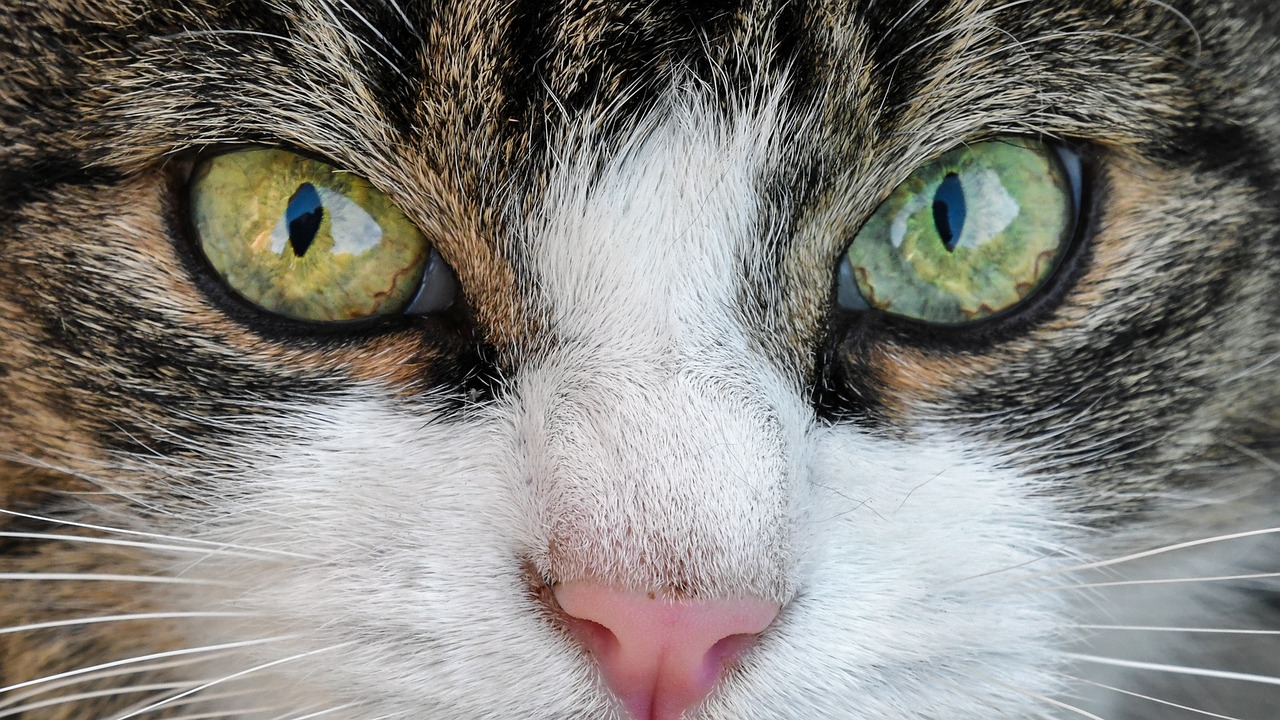
Establishing a Routine
Creating a consistent daily routine for your pet is like laying down a solid foundation for a house; without it, everything can feel unstable and chaotic. Just like humans, pets thrive on predictability and structure. When you establish a routine, you’re not only helping to reduce anxiety but also fostering a sense of security. Imagine how comforting it is to know what to expect throughout the day; your furry friend feels the same way!
One of the key components of a successful routine is regular feeding times. Feeding your pet at the same times every day can help regulate their metabolism and behavior. Think of it as setting a clock for your pet's internal schedule. This consistency can prevent food-related issues, such as begging or overeating, and helps instill a sense of discipline. Just as you wouldn’t want to skip breakfast, your pet appreciates knowing when their next meal is coming.
In addition to feeding, exercise and playtime are crucial elements of a daily routine. Regular physical activity is not just about keeping your pet fit; it’s about nurturing their mental health too. Engaging your pet in daily walks, play sessions, or interactive games can prevent destructive behaviors that arise from boredom or excess energy. Picture this: a dog that has spent a good hour chasing a ball is far less likely to chew on your favorite shoes! By incorporating playtime into your routine, you create an opportunity for bonding and fun, while also keeping your pet content and well-behaved.
To help you visualize the importance of a structured routine, consider the following table that outlines a sample daily schedule for your pet:
| Time | Activity |
|---|---|
| 7:00 AM | Morning Walk |
| 8:00 AM | Feeding |
| 9:00 AM | Playtime |
| 12:00 PM | Afternoon Walk |
| 1:00 PM | Feeding |
| 6:00 PM | Evening Playtime |
| 8:00 PM | Final Walk |
| 9:00 PM | Bedtime |
As you can see, a well-structured routine not only helps in managing your pet's behavior but also ensures they receive the necessary care and attention. Remember, a happy pet makes for a happy home. By committing to a routine, you are investing in a healthier, more balanced life for your furry companion.
Now, you might be wondering, how do you maintain this routine, especially with a busy lifestyle? The answer lies in flexibility. While it's essential to stick to your schedule, life can throw curveballs, and that’s okay! The key is to adapt while keeping the core elements of feeding, exercise, and playtime consistent. Your pet will appreciate the effort, and you’ll both reap the rewards of a well-behaved and happy companion.
Q: How long does it take for a pet to adjust to a new routine?
A: Typically, it can take anywhere from a few days to a couple of weeks for pets to fully adjust to a new routine. Patience and consistency are key!
Q: What if my pet resists the routine?
A: Start slowly by introducing one aspect of the routine at a time. Use positive reinforcement to encourage your pet to embrace the changes.
Q: Can I adjust the routine based on my pet's age or health?
A: Absolutely! Pets of different ages and health statuses may require different routines. Always consult with your veterinarian to tailor a routine that best suits your pet's needs.
Feeding Schedules
Establishing a consistent feeding schedule is more than just a routine; it’s a crucial component in shaping your pet's behavior and overall well-being. Imagine a world where your furry friend knows exactly when to expect their next meal—no more anxious pacing or frantic begging! By creating a structured schedule, you can help regulate your pet's hunger cues and reduce food-related issues. This predictability fosters a sense of security, allowing your pet to feel more relaxed and less anxious.
When setting up a feeding schedule, consider your pet's age, size, and specific dietary needs. Puppies and kittens generally require more frequent meals, while adult pets may thrive on two meals per day. For instance, a typical feeding schedule might look like this:
| Pet Age | Feeding Frequency |
|---|---|
| Puppies (up to 6 months) | 3-4 times a day |
| Adult Dogs (1 year and older) | 2 times a day |
| Kittens (up to 6 months) | 3-4 times a day |
| Adult Cats (1 year and older) | 2 times a day |
Another important aspect to keep in mind is the type of food you’re providing. High-quality pet food can significantly impact your pet's energy levels and behavior. It’s essential to measure portions accurately to avoid overfeeding, which can lead to obesity and a host of other health issues. You might find it helpful to use a measuring cup or a scale to ensure you're giving the right amount every time.
Additionally, feeding your pet at the same times each day can help develop a routine that they can rely on. Think of it as a daily ritual—just like you might enjoy your morning coffee or evening meal at specific times. This regularity can make a world of difference in your pet's behavior, as it reduces the likelihood of them becoming anxious or exhibiting problem behaviors related to food. For example, if your dog knows they’ll be fed at 7 AM and 6 PM, they’re less likely to beg for food at other times.
Moreover, consider the environment in which you feed your pet. A calm and quiet space can make mealtime more enjoyable and less stressful. Try to minimize distractions and noise, allowing your pet to focus on their food. This approach not only enhances their eating experience but also promotes mindfulness during meals, which can lead to better digestion and overall health.
In conclusion, establishing a feeding schedule is a simple yet powerful way to help prevent problem behaviors in pets. By providing structure, you’re not just feeding your pet; you’re nurturing their emotional health and well-being. Remember, a well-fed pet is a happy pet!
- How often should I feed my puppy? Puppies generally need to be fed 3-4 times a day until they are about six months old.
- Can I free-feed my adult dog? While some dogs may do well with free feeding, it can lead to overeating and weight gain. A structured feeding schedule is often better.
- What should I do if my pet refuses to eat? If your pet consistently refuses to eat, consult your veterinarian to rule out any underlying health issues.
- Is it okay to change my pet's food suddenly? No, it's best to transition to a new food gradually over a week to avoid digestive upset.
Exercise and Playtime
When it comes to our beloved pets, exercise and playtime are not just luxuries; they are necessities! Just like humans, pets need to burn off energy to stay healthy and happy. Imagine your furry friend as a pressure cooker—without a way to release that steam, they can become agitated and prone to problem behaviors. Engaging your pet in regular exercise and play can help alleviate anxiety, prevent destructive habits, and foster a stronger bond between you and your pet.
So, what does a typical exercise routine look like? Well, it varies depending on the type of pet you have. For dogs, a mix of brisk walks, runs, and interactive playtime can do wonders. Cats, on the other hand, might prefer pouncing on feather toys or chasing laser dots around the room. The key is to keep it fun and varied! Regular exercise not only keeps your pet physically fit but also stimulates their mind. A mentally stimulated pet is less likely to engage in unwanted behaviors.
Here are some engaging activities that can help keep your pet active:
- Fetch: This classic game is perfect for dogs! It provides a great workout and strengthens your bond.
- Agility Training: Set up a mini obstacle course in your backyard to challenge your pet physically and mentally.
- Interactive Toys: Puzzle toys can keep your pet entertained and mentally engaged, especially when you're busy.
- Group Playdates: Socializing with other pets can be incredibly beneficial for your pet's emotional health.
Establishing a routine for exercise is crucial. Aim for at least 30 minutes to an hour of physical activity each day, broken into manageable sessions. For instance, a morning walk followed by some playtime in the evening can work wonders. Remember, consistency is key! By making exercise a regular part of your pet’s day, you create a sense of stability, which can help reduce anxiety and other behavioral issues.
In addition to physical exercise, mental stimulation is equally important. Engaging your pet in games that require problem-solving can keep their minds sharp and help prevent boredom. Think of it this way: a tired pet is a happy pet! When your pet gets enough exercise and playtime, they're less likely to engage in destructive behaviors, such as chewing on furniture or excessive barking.
Ultimately, finding the right balance of exercise and playtime tailored to your pet’s specific needs is essential. Just like us, pets thrive on routine and engagement. So, get out there, have some fun, and watch as your furry friend blossoms into a well-behaved companion!
Q: How much exercise does my dog need?
A: Generally, dogs should get at least 30 minutes to 2 hours of exercise daily, depending on their breed and age. Active breeds require more exercise compared to smaller or less active breeds.
Q: What are some signs my pet is bored?
A: Common signs include destructive behavior, excessive barking, or restlessness. If your pet seems to be getting into trouble, it might be time to amp up their exercise routine!
Q: Can I over-exercise my pet?
A: Yes, over-exercising can lead to injuries or exhaustion. Always monitor your pet's energy levels and consult your veterinarian for personalized exercise recommendations.

Positive Reinforcement Techniques
When it comes to nurturing a well-behaved pet, positive reinforcement is your best friend. This technique revolves around rewarding desirable behaviors rather than punishing undesirable ones. Think of it as a way to create a win-win situation for both you and your furry companion. Instead of focusing on what your pet is doing wrong, you’re highlighting what they do right. This approach not only encourages good behavior but also strengthens the bond between you and your pet.
One of the most effective methods of positive reinforcement is through clicker training. This technique utilizes a small handheld device that makes a distinct sound when pressed. When your pet performs a desired action, you click the device and immediately follow it up with a treat or praise. This sound becomes a signal that they’ve done something right. Over time, your pet will associate the click with positive outcomes, making it easier for them to understand what behaviors you want to encourage.
Another fantastic way to implement positive reinforcement is through a structured reward system. This can include treats, verbal praise, or even playtime. The key is to ensure that the rewards are immediate and consistent. For instance, if your dog sits on command, give them a treat right away. The quicker the reward follows the behavior, the more likely your pet will repeat that behavior. You can also mix up the rewards to keep things exciting for your pet. Here’s a simple table to illustrate different types of rewards:
| Type of Reward | Description |
|---|---|
| Treats | Small, tasty snacks that your pet loves. |
| Verbal Praise | Using a happy tone to say "Good boy!" or "Well done!" |
| Playtime | Engaging in a fun activity, like fetch or tug-of-war. |
| Affection | Petting or cuddling your pet as a form of reward. |
Moreover, it’s essential to be patient and consistent. Just like humans, pets need time to learn and adapt. If your pet doesn’t respond immediately, don’t get discouraged. Keep practicing and reinforcing the good behavior. Over time, your pet will begin to understand what you expect from them, and they will be eager to please you.
In addition to these techniques, consider incorporating training sessions into your daily routine. Short, frequent training sessions are more effective than long, infrequent ones. Aim for sessions that last about 5 to 10 minutes, and make sure to end on a positive note with a successful command or trick. This not only helps reinforce good behavior but also keeps your pet mentally stimulated.
In conclusion, positive reinforcement techniques are a powerful way to encourage good behavior in your pets. By using methods like clicker training and reward systems, you can create a nurturing environment that promotes learning and strengthens your relationship. Remember, the goal is to make training a fun and rewarding experience for both you and your pet!
- What is positive reinforcement? Positive reinforcement is a training method that rewards desired behaviors to encourage their repetition.
- Can positive reinforcement work for all pets? Yes, positive reinforcement is effective for various pets, including dogs, cats, and even small animals.
- How quickly should I reward my pet? The reward should be given immediately after the desired behavior to create a strong association.
- What if my pet doesn’t respond to rewards? Be patient and consistent. Try different types of rewards to see what motivates your pet best.
Clicker Training
Clicker training is an incredibly effective and popular method for reinforcing positive behavior in pets, and it’s not just for dogs! This technique utilizes a small handheld device that makes a distinct sound, which serves as a marker for your pet when they perform a desired action. Think of the clicker as a magic wand that signals to your furry friend, “Yes, that’s exactly what I wanted you to do!” This immediate feedback helps pets understand which behaviors are rewarded, making the learning process both fun and efficient.
The beauty of clicker training lies in its simplicity and effectiveness. When your pet performs a behavior you want to encourage—like sitting on command or coming when called—you simply click the device and follow it up with a treat or praise. This combination creates a strong association in your pet's mind between the click sound, the action, and the reward. Over time, your pet will begin to anticipate the click and the subsequent treat, making them more likely to repeat the behavior.
One of the first steps in clicker training is to charge the clicker. This means you will click and treat several times in a row without asking your pet to do anything. This process teaches your pet that the clicker means something positive is coming their way. Once they understand this, you can start to incorporate commands and desired behaviors. It’s essential to be consistent with your clicks and treats, as inconsistency can confuse your pet and hinder their learning.
Here are some additional tips to make your clicker training sessions successful:
- Keep sessions short: Pets have short attention spans, so aim for 5-10 minute training sessions.
- Be patient: Every pet learns at their own pace. Celebrate small victories!
- Use high-value treats: Choose treats that your pet loves to keep them motivated.
- Practice regularly: Consistency is key! Regular practice helps reinforce learned behaviors.
Clicker training not only helps in teaching commands but also strengthens the bond between you and your pet. It’s a fun way to interact and engage with your furry friend, turning training into a game rather than a chore. So, grab a clicker, some treats, and get ready for some exciting learning sessions with your beloved pet!
Q: Can I use clicker training for cats?
A: Absolutely! Clicker training is effective for cats as well. They can learn commands and tricks just like dogs.
Q: What if my pet doesn’t respond to the clicker?
A: Ensure that your pet understands the purpose of the clicker by charging it properly. If they still don’t respond, try using higher-value treats or changing the training environment.
Q: How long does it take to train my pet with a clicker?
A: The time it takes varies by pet and the complexity of the behavior. Some pets may learn quickly, while others may need more time. Consistency and patience are crucial!
Reward Systems
Implementing a reward system can be a game-changer when it comes to encouraging good behavior in your pets. Just like humans, pets thrive on positive feedback. It’s like giving them a high-five for every good deed they do! But what does a reward system look like? Well, it can be as simple or as complex as you want it to be. The key is to ensure that your pet understands what behavior is being rewarded.
First and foremost, it’s essential to identify the behaviors you want to reinforce. For example, if your dog sits on command, that’s a behavior worth rewarding. When they do it, you can use a variety of rewards, including:
- Treats: Small, tasty snacks are often the most effective rewards. Just make sure they’re healthy!
- Praise: Verbal affirmations like "Good boy!" or "Well done!" can boost your pet's confidence and encourage them to repeat the behavior.
- Playtime: Some pets are motivated by play, so incorporating their favorite toy or a game of fetch can be a fantastic reward.
Now, you might be wondering, how do you implement this reward system effectively? Here’s a simple approach:
| Step | Description |
|---|---|
| 1. Identify the behavior | Choose the specific behavior you want to reinforce. |
| 2. Choose your reward | Decide on the type of reward that will motivate your pet the most. |
| 3. Timing is key | Reward your pet immediately after they perform the desired behavior to create a strong association. |
| 4. Consistency | Be consistent with your rewards to help your pet understand what is expected. |
Consistency is vital! If your pet sits and you forget to reward them, they might become confused about what they did right. Think of it like teaching a child; if they don't get a sticker for good behavior, they might not see the point in trying. Over time, as your pet learns the desired behaviors, you can gradually reduce the frequency of rewards, transitioning from treats to praise or play. This way, they’ll still feel appreciated without becoming overly reliant on treats.
In conclusion, establishing a reward system is not just about giving your pet snacks; it’s about building a strong, trusting relationship. It’s like a secret language between you and your furry friend, where every good deed is celebrated, and every moment together strengthens your bond. So, get ready to see your pet shine as they learn and grow through positive reinforcement!
Q: How often should I reward my pet?
A: Initially, reward your pet every time they perform the desired behavior. As they learn, you can start spacing out the rewards.
Q: What if my pet doesn’t respond to treats?
A: Every pet is different! Try using different types of rewards, such as toys, praise, or playtime, to find what motivates them best.
Q: Can I use punishment instead of rewards?
A: While some owners consider punishment, it’s generally more effective to focus on positive reinforcement. This builds trust and encourages a happier, more well-adjusted pet.
Q: How long does it take for a pet to learn a new behavior?
A: It varies by pet and behavior, but with consistent training and rewards, many pets can learn new behaviors within a few weeks.
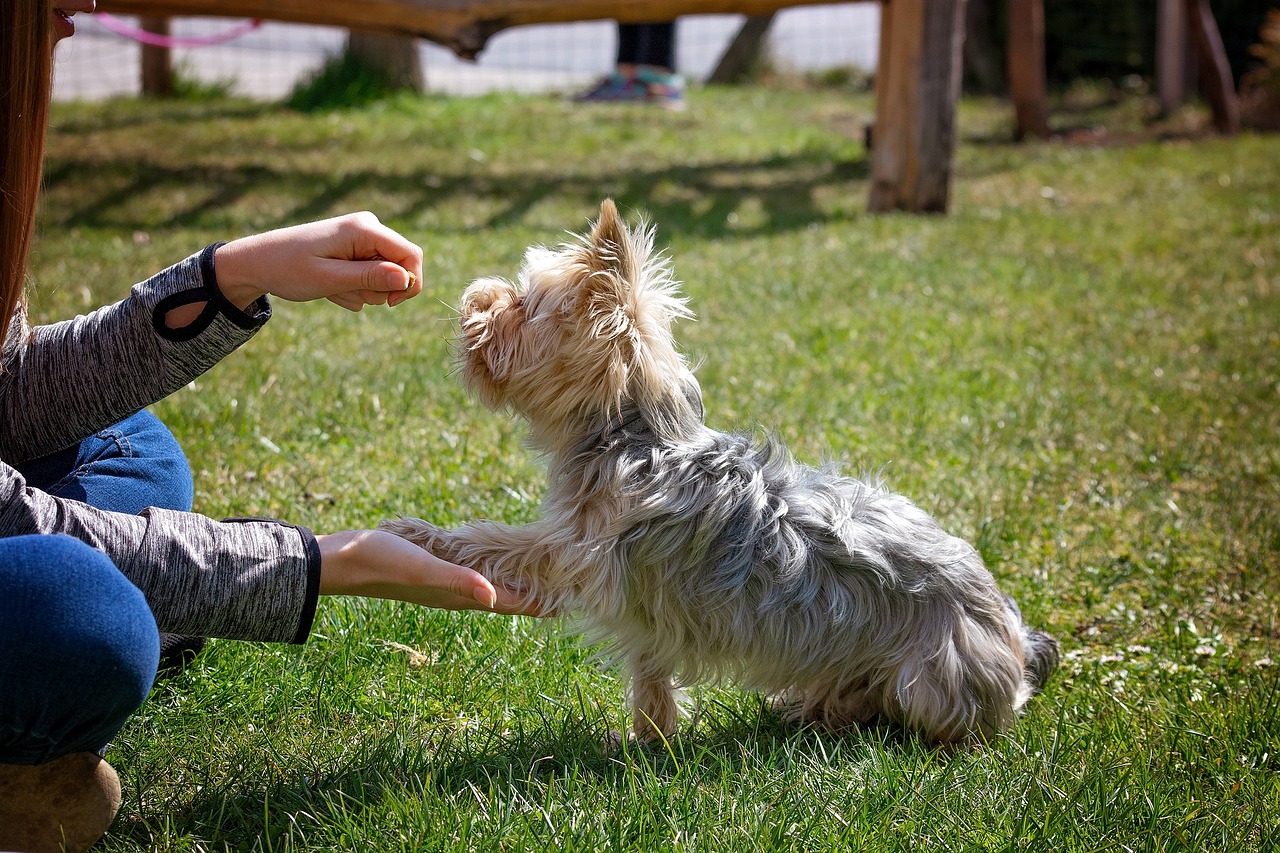
Socialization and Training
When it comes to our beloved pets, socialization and training are two sides of the same coin. Just like how we humans thrive in social settings, our furry friends need to learn how to interact with their environment, other animals, and people. Think of socialization as the foundation of a pet's personality. A well-socialized pet is often more confident and less anxious, which can significantly reduce the likelihood of problem behaviors. So, how do we go about this?
First and foremost, start early! Puppies and kittens are like sponges; they soak up experiences, and the earlier you expose them to different sights, sounds, and smells, the better. Take your puppy to the park, let them meet different people, and introduce them to other pets. This exposure helps them learn proper behaviors and decreases the chances of developing fears or aggression later on. But don’t worry if your pet is older; it’s never too late to start socializing them! Just be patient and take it slow.
Training is equally essential. It’s not just about teaching your pet to sit or stay; it’s about building a communication bridge between you and your furry friend. Positive reinforcement techniques, where you reward good behavior, can make training feel like a game rather than a chore. For example, if your dog sits when asked, give them a treat or a favorite toy. This not only reinforces the behavior but also strengthens your bond. Remember, training should be a fun experience for both of you!
Consider enrolling your pet in a training class. These classes often provide structured environments where pets can learn while interacting with others. Plus, you’ll get valuable tips from professional trainers on how to handle specific issues. Here’s a quick overview of what to look for in a training program:
| Criteria | Importance |
|---|---|
| Positive Reinforcement Focus | Encourages good behavior without fear or intimidation. |
| Small Class Sizes | Allows for more personalized attention for each pet. |
| Qualified Instructors | Experienced trainers can provide expert guidance. |
| Socialization Opportunities | Interacting with other pets helps reduce anxiety. |
Lastly, consistency is key. Use the same commands and signals every time you train your pet. This helps them understand what you expect and creates a sense of security. Also, remember to be patient! Training and socialization take time, but the rewards of a well-adjusted pet are absolutely worth the effort.
- What age should I start socializing my pet? It's best to start socialization as early as possible, ideally during the critical socialization period, which is between 3 to 14 weeks for puppies.
- Can older pets be socialized? Yes, older pets can still learn and adapt. Just be patient and take gradual steps.
- How can I tell if my pet is well-socialized? A well-socialized pet is generally calm around new experiences, people, and other animals and shows curiosity rather than fear or aggression.

Seeking Professional Help
When it comes to managing your pet's behavior, there are times when the situation might feel overwhelming. You may have tried various strategies, yet the issues persist or worsen. In such cases, seeking professional help can be a game-changer. But how do you know when it’s time to call in the experts? Understanding the signs can help you make the right decision for your furry friend.
First and foremost, if your pet exhibits severe behavioral issues such as aggression, excessive anxiety, or destructive tendencies that pose a risk to themselves or others, it’s crucial to consult a professional. This could mean reaching out to a veterinarian who specializes in animal behavior or an animal behaviorist who can provide targeted strategies tailored to your pet's specific needs. These professionals have the training and experience to identify underlying issues that you might not be able to see, such as medical conditions that could be influencing your pet's behavior.
Here are a few signs that indicate it might be time to seek professional help:
- Persistent Aggression: If your pet frequently shows aggression towards people or other animals, it’s essential to get professional guidance.
- Extreme Anxiety: Signs like excessive barking, whining, or destructive behavior when left alone can indicate anxiety that needs expert intervention.
- Uncontrollable Behavior: If your pet’s behavior is out of control and poses a risk to their safety or that of others, don’t hesitate to seek help.
Moreover, professional trainers and behaviorists can offer personalized training programs that not only address behavioral issues but also strengthen the bond between you and your pet. They often use positive reinforcement techniques, which are not only effective but also promote a healthy, trusting relationship. Think of it as getting a personal coach for your pet, someone who can guide both of you through the journey of learning and adapting.
When choosing a professional, it’s vital to do your research. Look for credentials, experience, and reviews from other pet owners. A good behaviorist or trainer will often provide a consultation to discuss your pet’s specific issues and outline a plan tailored to their needs. Don’t be afraid to ask questions during this initial meeting; after all, you want to ensure that their approach aligns with your values and your pet’s well-being.
In summary, while it can be daunting to reach out for help, remember that you’re not alone in this journey. Many pet owners face similar challenges, and professional support can make a significant difference. Think of it as an investment in your pet’s happiness and your peace of mind. By taking this step, you’re not only improving your pet's behavior but also enhancing your overall relationship with them.
Q: How do I know if my pet needs professional help?
A: If your pet displays aggressive behavior, severe anxiety, or destructive tendencies, it's advisable to consult a professional. Persistent issues that you cannot resolve on your own are also strong indicators.
Q: What qualifications should I look for in a pet behaviorist?
A: Look for certified professionals with experience in animal behavior. Check their reviews and ask for references to ensure they have a good track record.
Q: Will professional help be expensive?
A: Costs can vary widely based on the type of services offered and your location. However, investing in professional help can save you money in the long run by addressing issues early.
Q: Can I train my pet myself without professional help?
A: Yes, many pet owners successfully train their pets using resources like books and online courses. However, if you encounter persistent issues, seeking professional guidance can be beneficial.
Frequently Asked Questions
- What are some common problem behaviors in pets?
Common problem behaviors in pets include excessive barking, chewing on furniture, digging, and aggression. Understanding the root causes of these behaviors is essential to address them effectively.
- How can I establish a routine for my pet?
Creating a consistent daily routine involves setting regular feeding times, scheduling daily exercise, and allocating playtime. This structure helps reduce anxiety and promotes good behavior in your furry friend.
- What is positive reinforcement, and how does it work?
Positive reinforcement is a training method that rewards desirable behaviors to encourage them. This can include treats, praise, or playtime when your pet behaves well, strengthening the bond between you and your pet.
- How can I effectively use clicker training?
Clicker training involves using a small device that makes a clicking sound to mark desired behaviors. When your pet performs a good action, you click and then reward them, helping them associate the behavior with positive feedback.
- Why is socialization important for pets?
Socialization helps pets adapt to new environments and experiences, reducing anxiety and the likelihood of problem behaviors. Exposing your pet to various situations, people, and other animals can promote a well-rounded personality.
- When should I seek professional help for my pet's behavior?
If your pet exhibits severe behavioral issues that you cannot manage, such as aggression or extreme anxiety, it’s time to consult a veterinarian or an animal behaviorist for expert guidance and support.





